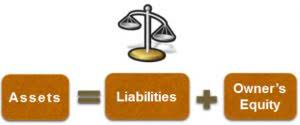
The sales ledger control account plays a key role in managing trade receivables, offering a summary of amounts due from customers for credit sales. It is instrumental in tracking all credit sales, and payments received, and identifying overdue accounts. In essence, these accounts offer a bird’s-eye view of a company’s credit sales and customer-related financial activities, including the management of trade debtors.
Books of Prime Entry

So, recording numerous numbers of customers and suppliers on credit (throughout one year period) could create a lot of errors. One way to ensure arithmetic accuracy is to do control accounts by bringing multiple debtors/creditors in a year to the control accounts (like a summary throughout the year). The purchases ledger control account summarizes total amounts owed to suppliers, making it easier to track and manage payables. Let’s say; A sole trader runs a small business, and his transactions are limited to a few number. He maintains only one ledger (General Ledger) to keep all his accounts as his ledger accounts are not many. At the end of the accounting period, to test the arithmetical accuracy of these accounts, he prepares a trial balance.

A. Sales Ledger Control Account (Accounts Receivable Control Account)
- 7- A purchase ledger provides a bridge between various crucial accounts like; inventory account and party’s account or sales account.
- It is very important to keep an account of all of that information compiled at one place, and a purchase ledger performs that duty effectively.
- For credit sales, the control account is often referred to as the sales ledger or sales ledger control account (SLCA).
- Whether it’s paying a utility bill, purchasing laptops for your employees, or selling 1,000 baseball bats, it’s essential that any transaction that involves money, either coming in or going out, is recorded properly.
- Control accounts consolidate multiple transactional information into convenient, high-level summaries, which makes it much easier to evaluate and interpret financial data.
Control accounts are a type of accounting control which is used mainly in manual accounting systems. This sale is recorded in Customer B’s individual account in the accounts receivable subsidiary ledger as a debit (increase) to their balance, which is now £800. In this example, £500 is added to the accounts receivable control account (as it represents an increase in the total amount owed by all customers). This sale is recorded in Customer A’s individual account in the accounts receivable subsidiary ledger as a debit (increase) to their balance, which is now £500. Like the purchase ledger, the sales ledger should have a separate account for each customer, which makes it easier to track outstanding invoice totals. One account is debit, and another account is credit with a balanced amount.
Sources of Information for Control Accounts
It indicates the total amount a business entity owes to its suppliers at a particular point in time. Therefore, it is a “short-term liability” for the business entity and forms part of the balance sheet. A comprehensive ledger that contains all the accounts of the company used to prepare financial statements. A current liability account that represents the company’s obligations to pay off short-term debts to its creditors and suppliers. Let us understand the advantages of hiring a purchase ledger clerk who ensures all entries relating to this account are maintained in a meticulous manner. Many online software options today designed for small businesses and those just starting out do not include these extra accounts as they can cause undue complications in managing the financial accounts of a small business.
By summarizing all transactions related to purchases made on credit, these accounts provide insights into what the business owes to its suppliers. Control accounts play a critical role in financial accounting by summarizing detailed transactions recorded in subsidiary ledgers. They help businesses maintain accuracy, streamline reconciliation, and enhance financial reporting. Different types of control accounts serve various purposes, such as tracking receivables, payables, and inventory movements. By understanding the different types of control accounts, businesses can efficiently manage financial data, detect errors, and improve decision-making processes. This article explores the primary types of control accounts, their functions, and real-world applications in business accounting.
They simplify ledger management, detect errors, and enhance the efficiency of financial record-keeping. For IGCSE Accounting (0452) students, understanding control accounts—their purpose, preparation, and reconciliation—is a vital skill. This blog explores purchases ledger and sales ledger purchase ledger control accounts, their sources of information, and how they integrate with the books of prime entry.
Suppose the closing balance of the accounts payable in the control account (prepared with accumulated balances) is the same as the total accounts payable balance in the general ledger. In that case, our confidence in the closing balance increases as these are reconciled. Since it indicates the total trade payables, it shows a credit balance and the modern rule of accounting cannot be broken under any circumstances. The source documents are also used to enter details of the payments for each supplier in the accounts payable subsidiary ledger which now appears as follows. In this example, the business uses a cash control account in the general ledger, and the cash book does not form part of the double entry system, and is simply a listing of the cash payments.
- Control accounts also facilitate the reconciliation process, ensuring that the general ledger and individual customer and supplier accounts are in alignment.
- In Debitoor accounting & invoicing software, the double-entry bookkeeping method is built-in, meaning that when you enter an expense, you can also enter payments on the expense for specific suppliers.
- This control account summarizes all transactions related to amounts owed by customers.
- One way to ensure arithmetic accuracy is to do control accounts by bringing multiple debtors/creditors in a year to the control accounts (like a summary throughout the year).
- Using them effectively gives you better control over your finances, and you can make informed decisions to drive your business forward.
- To make it easier to manage purchasing activity, each vendor or supplier should have their own account.
Double Entry Bookkeeping
Control accounts also facilitate the How to Run Payroll for Restaurants reconciliation process, ensuring that the general ledger and individual customer and supplier accounts are in alignment. By providing a consolidated view of financial transactions, control accounts are instrumental in quickly pinpointing overdue accounts and addressing potential cash flow issues. Purchase ledger control account performs a similar aggregating function for credit purchases. These accounts are vital for businesses to manage their trade payables efficiently. Within the purchase ledger control account, every credit and debit entry reflects the business’s purchasing activities and payments to suppliers, playing an important role in managing company trade payables.

Where do I find the information to complete a purchases ledger control account?
Designed for freelancers and small business owners, Debitoor invoicing software makes it quick and easy to issue professional invoices and manage your business finances. Total purchase returns from the Return Outwards Day book (Purchase returns journal). Wordstemplates.org endorses it’s stance here that this website is neither part of Microsoft® or their any product or nor in partnership with the partners of Microsoft@ to promote their products. Wordstemplates.org is not in a partnership with any firm or business or company which is hired to promote Microsoft@. The business makes another sale, this time to Customer B. They sell another laptop and a monitor for £800.

The ledger is useful for segregating into one location a record of the amounts a company spends with its suppliers. The purchase ledger shows which purchases have been paid for and which purchases remain outstanding. A typical transaction entered into gross vs net the purchase ledger will record an account payable, followed at a later date by a payment transaction that eliminates the account payable. Thus, there is likely to be an outstanding account payable balance in the ledger at any time.
